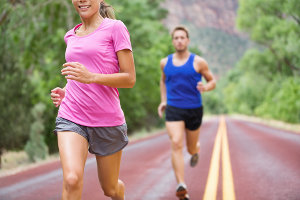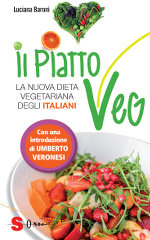
Physical activity
Basic rules:
- Find your own balance between food and physical activity.
- Dedicate at least 30 minutes a day to physical activity, at least for 4-5 days a week.
- Children and adolescents should spend at least an hour a day, almost every day.
What is physical activity

Physical activity is any body movement that requires energy, including even normal daily activities such as walking, running, taking the stairs, dancing, gardening, etc.
In order that physical activity be beneficial to health, it must be moderate or intense, and must last at least 30 minutes a day.
Moderate activities include: walking excursions, light gardening, dancing, golfing, cycling (less than 16 km/h), walking (less than 5.6 km/h), lifting light weights, stretching.
Intense activities: jogging (at least 8 km/h), cycling (more than 16 km/h), swimming (e.g., slow crawl), aerobics, walking (at least 7.2 km/h), heavy gardening (e.g., cutting wood) , weightlifting (heavy), competitive basketball.
The physical activities lighter than those indicated as "moderate" should not be counted because they do not raise the heart rate. For example, slow walking, normal housework.
Why it is important
A physically active lifestyle is one of the secrets of living longer, healthier and happier. In fact, physical activity is of great help in counteracting stress and gives a sense of well-being, besides helping to obtain a healthy weight and reducing the risk of chronic diseases.
Here are the main benefits:
- It reduces stress, anxiety, depression.
- It increases self-esteem, self-control and the feeling of general well-being.
- It strengthens bones, muscles and joints.
- It increases muscle strength and resistance.
- It helps to stay fit.
- It helps to maintain body weight.
- It improves the regulation of blood pressure in hypertensive patients and blood glucose control in diabetics.
- It decreases the risk of chronic diseases (vascular disease, some cancers, diabetes mellitus type 2).
Physical activity and nutrition are precisely the two lifestyle factors crucial to good health. It must also be remembered that with advancing age, the metabolism slows down, so you need to eat less and move more.
The following are the recommended, healthier types of physical activity:
-
Aerobic activities: these improve cardiorespiratory function, by increasing the respiratory and heart rates, as well as improving the metabolism of fats and sugars. They consist of activities such as brisk walking, swimming, cycling, and jogging.
-
Resistance activity, of moving and lifting weights and muscle strengthening: increase and maintain muscle and bone mass, working against the force of gravity; for example: lifting weights, carry a baby in your arms.
-
Activities that stimulate balance and stretching: improve postural stability and muscle-tendon and articular elasticity, reducing the risk of accidental trauma; they are activities such as stretching, t'ai chi, yoga, dance and martial arts.
Useful advice
-
Make physical activity a habit, a routine, it will be much easier to carry it steadily forward.
-
Choose an activity that you like or you can do in your daily routine, like walking to work in fast pace or even to the grocery store. Or take part in courses, varying the exercises during the various days.
-
To make a total of 30 minutes of physical activity each day, try 2 fast-paced 15 minute walks or go swimming 3 times a week and during the remaining days, take a yoga course, for example. Never do less than 10 minutes of activity at a time, it does not have the same effect.
To stay in shape, during daily activity:
-
Do not use the elevator, but you always take the stairs, quickly.
-
Always walk at a fast pace, as if you were late.
-
Use the car as little as possible: walk when you can, go by bike, or take the bus.
-
When you use the car, park far away, so as to have to do a piece on foot. If you go by bus, get off one stop before, and walk the rest of the way.
-
When you have to wait standing (e.g., for the bus), walk back and forth, raise up and down on the balls of your feet (this movement is also helpful in preventing fainting for those suffering from low blood pressure). If you must stay still, a useful exercise is to flex and relax your buttocks.
-
Before taking a shower, do 5-10 push-ups. In a year, you’ll have done 1800-3600!
-
While you watch TV, do stretching exercises or pedaling on a stationary bike.
-
During breaks at the office, instead of going for coffee, use that time for a 10 minute walk, perhaps with a colleague.
-
Even housework is physical activity!
-
If you have a garden to tend, great exercises are mowing the lawn with a push mower, trimming the hedges with shears, raking the leaves.
-
Before you sleep, go for a walk.
-
Play with your kids tag, hide and seek, football, table tennis.
-
Walking in company, it is more stimulating!
-
Go for a walk with your dog.
-
Go dancing
-
Join yoga classes, martial arts, aerobics, water gym.
-
Choose a sport that you enjoy and find the time to practice it: tennis, football, basketball, volleyball, table tennis, swimming, canoeing, skiing, cycling, rowing.
-
When you're on vacation, take long walks or bike rides and involve the whole family.
Physical activity is one of the pleasures in life!
VegPlate - the books

